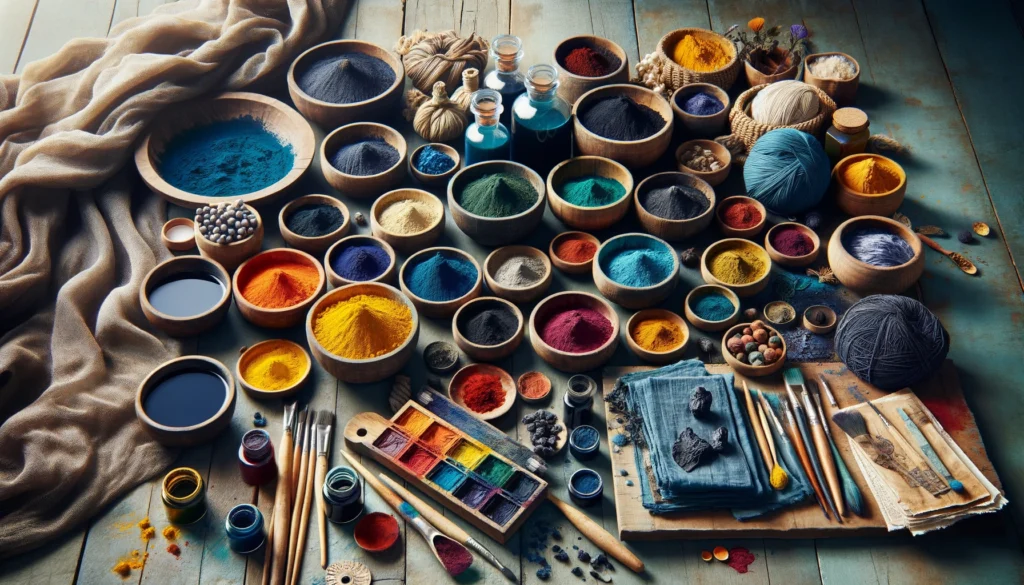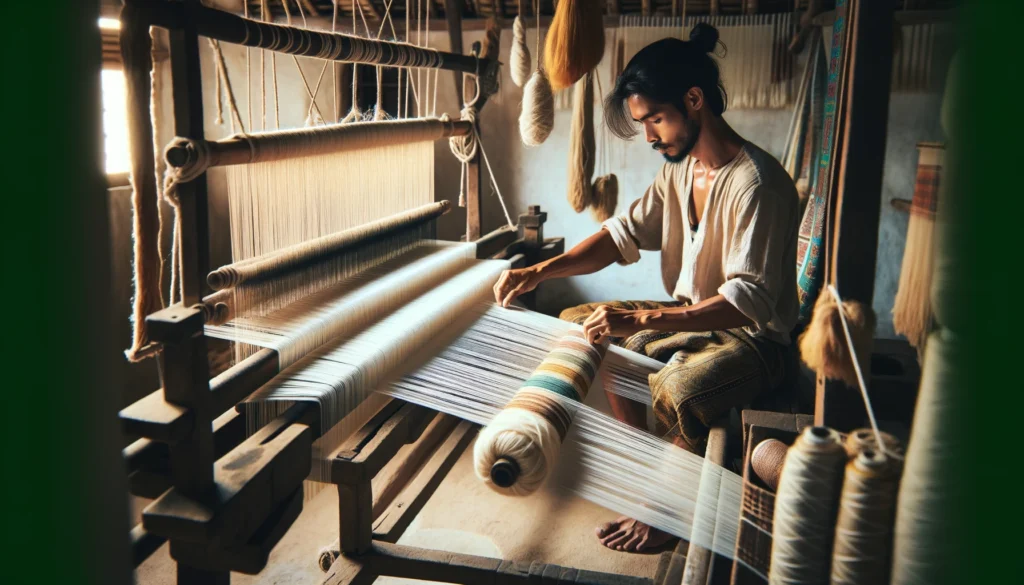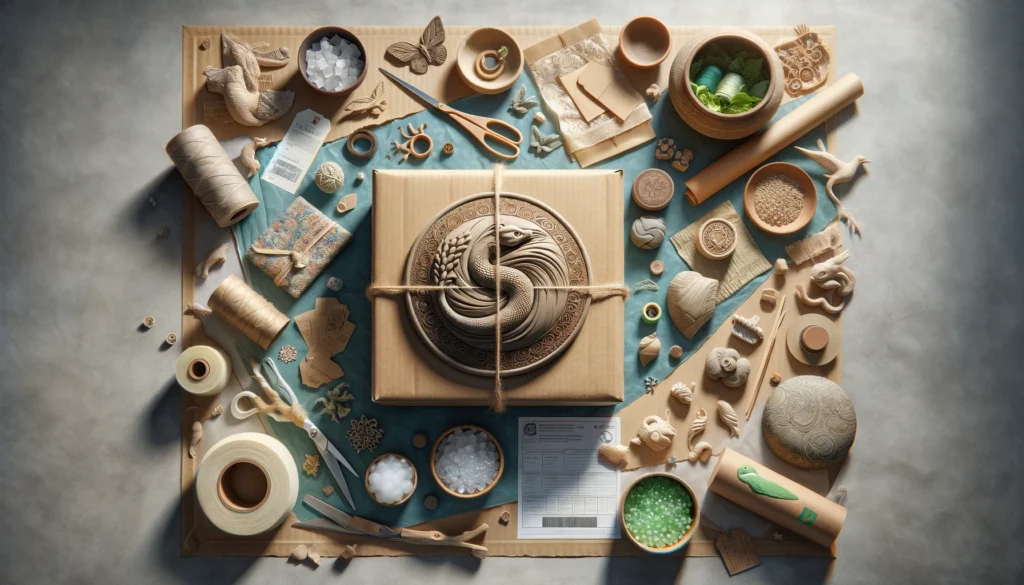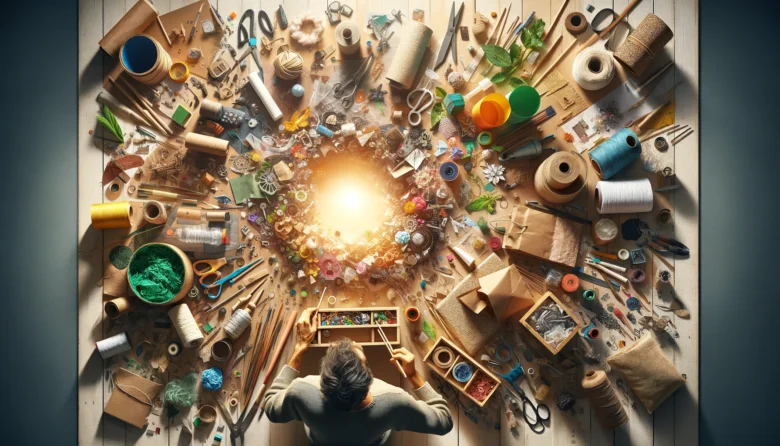In the heart of traditional crafts lies a story of not just culture and heritage but also of sustainability and eco-consciousness. As the world becomes increasingly aware of the environmental impact of our choices, artisans and craft enthusiasts are turning towards sustainable practices and materials. This shift not only preserves the planet but also adds a layer of depth and responsibility to the art of crafting. Let’s explore the greener side of traditional crafts.
Embracing Eco-Friendly Practices
In the artisanal world, a green wave is surging, bringing with it a renewed emphasis on eco-friendly practices that hark back to the origins of traditional crafting. This movement isn’t just about making a minimal environmental impact; it’s a reverent nod to the wisdom of our ancestors, who utilized resources with care and respect. As artisans blend these age-old practices with contemporary insights, they’re not just crafting items; they’re weaving sustainability into the very fabric of their creations.

Championing Materials that Matter
- Natural and Recycled Materials: The conscious choice to use sustainable materials marks a pivotal shift in crafting. Artisans are increasingly turning to resources like organic cotton, which uses less water and is free from harmful pesticides, and bamboo, known for its rapid growth and biodegradability. Similarly, recycled metals and plastics are being repurposed into stunning pieces, reducing the need for new raw materials and minimizing waste.
- Non-Toxic Dyes and Finishes: The resurgence of natural dyes signifies a departure from chemical-laden processes towards more earth-friendly methods. These dyes, sourced from plants, minerals, and other natural compounds, not only reduce pollution but also offer a safer working environment for artisans. Similarly, eco-friendly finishes on wood and textiles ensure that the final product is as kind to the planet as it is to the consumer.
The Impact of Sustainable Crafting
The green crafting movement extends its roots deep into the environmental, cultural, and economic soil, nurturing a tree of benefits that reaches far beyond the crafting table.

A Multifaceted Impact
- Preserving Traditional Techniques: The essence of many traditional crafts lies in their inherent sustainability—utilizing local materials judiciously and minimizing waste. By reviving these practices, artisans are not just preserving a craft; they’re safeguarding an ethos, ensuring that the ecological wisdom of the past informs our present and shapes our future.
- Fostering Innovation: The constraints imposed by a commitment to sustainability often serve as a catalyst for creativity. Artisans are compelled to think outside the box, experimenting with unconventional materials and pioneering new techniques. This spirit of innovation not only breathes new life into traditional crafts but also ensures they remain relevant and appealing in a rapidly changing world.
- Enhancing Market Appeal: In an era where consumers are increasingly conscious of their ecological footprint, sustainable crafts offer an appealing alternative to mass-produced goods. These crafts tell a story of mindful production, ethical labor, and environmental stewardship, resonating with buyers looking for authenticity and meaning in their purchases. This shift is not just about preference; it’s about principle, with consumers and artisans alike contributing to a more sustainable and equitable marketplace.
The movement towards sustainable crafting is weaving a rich tapestry of environmental stewardship, cultural preservation, and economic viability. It’s a testament to the enduring relevance of traditional crafts in our modern world and their potential to lead the way in sustainable living.
The Future of Sustainable Crafts
Looking ahead, the fusion of traditional crafts with sustainable practices paints a hopeful picture for both the environment and cultural heritage. This green crafting movement is not a fleeting trend but a fundamental shift towards a more responsible and conscious approach to craftsmanship.

Crafting a Greener Tomorrow
- A Community Effort: The journey towards sustainability in crafts is a collective endeavor. It requires the collaboration of artisans, consumers, suppliers, and educators, each contributing to a more sustainable and vibrant crafting ecosystem.
- Education and Advocacy: As we move forward, education will play a crucial role in spreading the message of sustainable crafting. Workshops, online platforms, and community programs can help share knowledge and skills, inspiring more artisans to adopt green practices.
- Innovation and Collaboration: The future will also see increased collaboration between artisans, designers, and environmental experts, exploring innovative ways to blend tradition with sustainability. These partnerships will pave the way for new materials, techniques, and business models that ensure the longevity and relevance of traditional crafts in a green future.
As we embrace the principles of sustainability in traditional crafts, we weave a new narrative—one that honors the past while caring for our planet’s future. This movement towards green crafting is a testament to the enduring value and adaptability of traditional arts, ensuring they remain a cherished legacy for generations to come.

Author’s Note
This exploration into the sustainable practices within traditional crafts highlights the beautiful synergy between heritage and environmental stewardship. As we continue this series, we celebrate the artisans leading the way in green crafting, inspiring us all to consider the impact of our creative endeavors. Join us as we delve deeper into the stories, techniques, and innovations that make traditional crafts a beacon of sustainability in the modern world.
G.C., Ecosociosphere contributor.
References and Further Reading
- “A Deep Dive Into Sustainable Materials For Handicrafts” – A guide to eco-friendly crafting materials and techniques.
- “Art and Sustainability: Pioneering a Greener Future in the Arts” – Exploring the history and future of sustainable practices in craft-making.
- Success stories of artisans who have successfully integrated sustainable practices into their work, offering inspiration and practical advice.
As the world embraces sustainability, traditional crafts offer a unique perspective on how art and environmental responsibility can intertwine, creating a legacy that is not only culturally significant but also kind to our planet.





Comments
Your point of view caught my eye and was very interesting. Thanks. I have a question for you.
I don’t think the title of your article matches the content lol. Just kidding, mainly because I had some doubts after reading the article.
I don’t think the title of your article matches the content lol. Just kidding, mainly because I had some doubts after reading the article.
Your article helped me a lot, is there any more related content? Thanks!
As someone who’s passionate about sustainability, I’m always excited to learn about new ways to reduce our environmental footprint. I particularly appreciated the section on upcycling old materials to create unique art pieces. I’ve always been fascinated by the idea of giving new life to discarded items, and your examples of turning old maps into decoupage art or creating sculptures from recycled plastic bottles were truly inspiring.
Thanks for sharing. I read many of your blog posts, cool, your blog is very good.
Your article helped me a lot, is there any more related content? Thanks!
Thanks for sharing. I read many of your blog posts, cool, your blog is very good. https://accounts.binance.com/ph/register-person?ref=B4EPR6J0